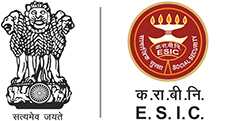ESIC Hospital Tinsukia
What's New
- Tender
- Circular
- Recruitment
- Home
- /
- Diagnostic Services
Diagnostic Services
The diagnostic services process at the ESIC Hospital in Tinsukia typically involves the following steps:
- Patient Registration: The patient must first visit the hospital and complete the registration process, either through online or in-person registration. For ESIC beneficiaries, their ESIC card and relevant details are required for registration.
- Consultation: After registration, the patient meets with a doctor who assesses their symptoms and medical history. If necessary, the doctor will prescribe diagnostic tests based on the clinical evaluation.
- Diagnostic Test Request: The doctor issues a test requisition form for necessary diagnostic services (e.g., blood tests, X-rays, ECGs, ultrasound, etc.).
- Test Booking: The patient proceeds to the diagnostic department. Depending on the availability and urgency, some tests may be done immediately, while others may require an appointment.
- Sample Collection and Testing: For laboratory tests (blood, urine, etc.), the patient provides samples at the designated collection points. Imaging tests (X-rays, ultrasound, etc.) are performed at the relevant diagnostic units.
- Results Generation: After the tests are completed, the diagnostic results are analyzed by the medical team. In the case of laboratory tests, reports are generated in print.
- Report Collection and Follow-up: The patient can collect the reports from the receive counter. The doctor reviews the results with the patient and provides further treatment recommendations based on the findings.
- Treatment or Referral: Depending on the diagnosis, the patient may receive treatment at the ESIC hospital or be referred to a specialist or higher medical center if necessary.
- This process ensures that diagnostic services are accessible to all ESIC beneficiaries, facilitating timely medical interventions.
Last updated / Reviewed : 2024-11-25
 कर्मचारी राज्य बीमा निगम Employee's State Insurance Corporation श्रम एवं रोजगार मंत्रालय, भारत सरकार Ministry of Labour & Employment, Government of India
कर्मचारी राज्य बीमा निगम Employee's State Insurance Corporation श्रम एवं रोजगार मंत्रालय, भारत सरकार Ministry of Labour & Employment, Government of India
